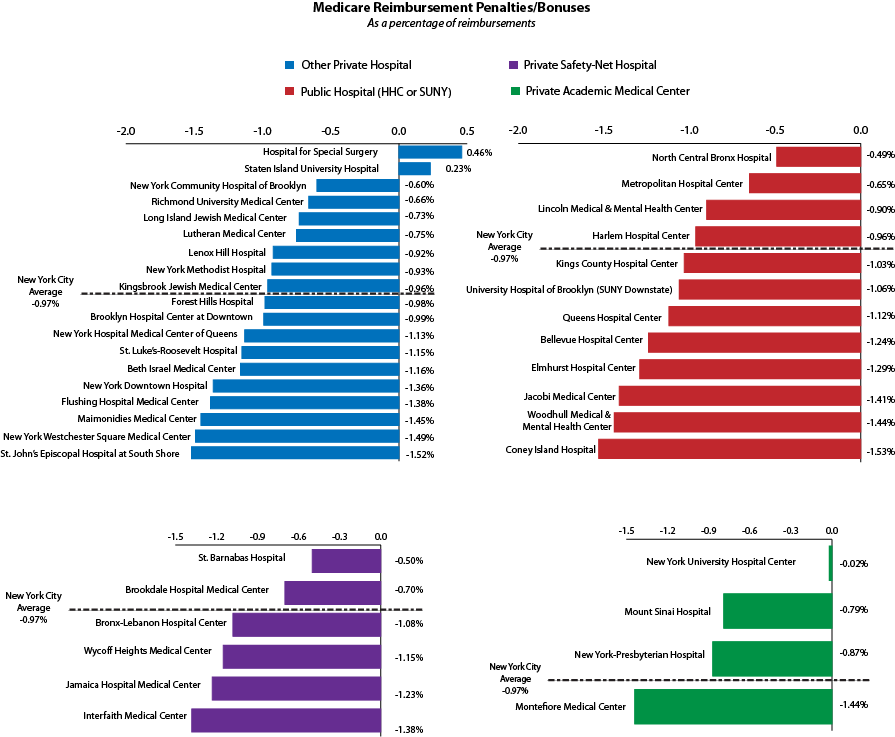In January, Mayor de Blasio announced NYC Care, a city-funded NYC Health + Hospitals initiative expected to cost $100 million per year when fully implemented in fiscal year 2022. While the city’s public hospital system already provides care to anyone, regardless of ability to pay and immigration status, a key goal of the new initiative is to link the uninsured with a primary care provider—diverting patients from unnecessary emergency room visits for routine care. The program will also support efforts to boost enrollment of those who are eligible for the public health system’s MetroPlus insurance plan. There were about 615,000 uninsured New Yorkers in 2017, roughly 7 percent of the city’s population, according to the latest figures from the U.S. Census Bureau. Among city residents who were not U.S. citizens about 300,000, or nearly 22 percent, were uninsured—and the rate was likely even higher among noncitizens who were undocumented.
Because NYC Care relies on using NYC Health + Hospitals facilities, the success of the initiative is dependent in part on accessibility. Are the city’s more than 70 public hospitals and clinics located in neighborhoods with heavy concentrations of the uninsured? IBO has mapped the location of public hospital facilities and the share of uninsured in the city’s 59 community districts.
Where the Uninsured Reside and Location of Public Hospital System Facilities
- Some of the city’s community districts had particularly high shares of uninsured but little access to nearby public hospital facilities. Queens Community District 7, which includes the neighborhoods of Flushing, Murray Hill, and Whitestone, had an uninsured rate of 15.5 percent in 2017, the highest in the city. Yet there are no public hospital facilities in the district. Likewise, Brooklyn Community District 7 (Sunset Park and Windsor Terrace) had an uninsured rate of 12.4 percent and no public hospital facilities in proximity.
- Conversely, there were neighborhoods, such as Queens Community Districts 3 (Jackson Heights and North Corona) and 4 (Elmhurst and South Corona), with comparatively high shares of uninsured residents as well as nearby public hospital facilities. More than 14 percent of residents in Queens Community Districts 3 and 4 were without insurance.
- There also were neighborhoods with comparatively low rates of uninsured residents such as Manhattan’s Community District 3 (Chinatown and Lower East Side, 6.0 percent uninsured) and Community Districts 1 and 2 in the Bronx (Hunts Point, Longwood, and Melrose; 9.3 percent) served by a number of NYC Health + Hospitals facilities.
Prepared by Melinda Elias
New York City Independent Budget Office
Print version available here.
SOURCES: U.S. Census Bureau, American Community Survey 1-year estimates, 2017 for Public Use Microdata Areas (PUMA); NYC Health + Hospitals Facilities. NYC Open Data. Updated September 10, 2018.
NOTES: Certain community districts are combined under PUMA. These include Bronx Community Districts 1 & 2 and 3 & 6, as well as Manhattan Community Districts 1 & 2 and 4 & 5. Additionally, some NYC Health + Hospitals health centers may be located within the system’s hospital facilities.
